
views
X
Research source
While it has a reputation for "cacti and rocks" among gardeners who have not tried it, xeriscaping can create varied and beautiful environments.
Planning Your Xeriscape Project

Diagram your yard. Draw a map of your yard, measuring and labeling the distances between buildings, fences, large trees, and other permanent structures. You may label some tentative areas as open space areas, flowerbeds, or other designations, but you'll be able to plan this better once you've collected some data. It is a great idea to draw your yard. Use some graph paper for the best results and most accurate layout.
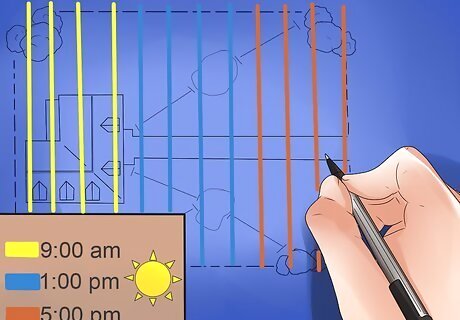
Make a sun chart. Xeriscaping is all about matching the plants to the existing environment, and part of that is finding out how much sun different areas of your garden receive. Every few hours, record where the sun is shining on your map. Keep in mind that the site's exposure to sunlight will also vary at different times of the year. A perennial plant used to the equatorial tropics is not a great choice for an area with cold, dark winters. One way to mark this on your map is to draw dotted lines around the area receiving sun, and label the area inside them with the time of day. At the end of the day, write in approximately how many hours of sunlight each area received, based on the dotted lines. Note any shaded areas that may happen as the sun moves throughout the day, such as areas under and around trees, awnings, buildings etc.
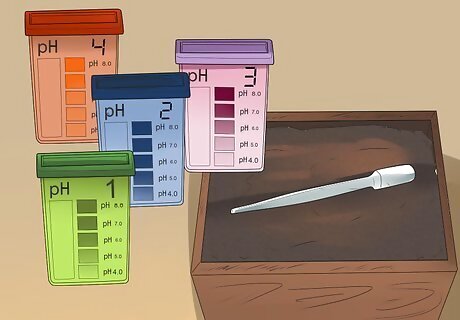
Analyze and adjust your soil. Your local agricultural government office, or your local cooperative extension in the US, can analyze your soil for you if you send in sample. This will give you plentiful information which you can use when selecting plants, or when adding soil additions to your garden. Each plant has a preferred range of pH levels, soil types, and nutrient levels which may be included on the label or available through an online search. If you want to increase the nutrients or water retention in your soil, mix in 1–2 inches of compost or other rotted organic matter six inches deep. If a soil analysis is not feasible, consider using plants native to your area only, which often do not require soil adjustments.

Know your climate. Look up your area's Hardiness Zone on the USDA website by searching for you area, or by referring to the chart defining zones by minimum annual temperatures. Search online for your region's annual rainfall as well. Focus on plants with a hardiness rating and preferred rainfall levels suitable for your area, so your garden will thrive without expending extra effort and resources. If annual rainfall is concentrated in a short "monsoon" period, you may need plants that can withstand a wide range of water levels, or plant annual plants that thrive either in the monsoon season or the dry season.

Select "layers" of plants by drought resistance. Obtain a list of plants appropriate for your region using USDA guidelines, a regional gardening book, or the example section below. Focus on native plants if possible, and match their requirements to your garden conditions. As described in more detail below, your xeriscaped garden will be planted in "layers" surrounding each focal point or "oasis" with high visibility and good water retention, such a tree or house. The basic plan involves: Oases with bright, eye-catching species that are well-suited to local conditions. A transition area around each oasis, with plants with lower water requirements. Arid zones with low water retention or low visibility, where more drought-tolerant, low-maintenance plants are kept.
Planting a Xeriscaped Garden
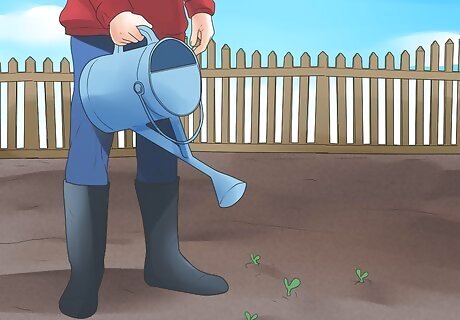
Designate your oasis zones. These areas will receive the most water and attention, so you can select plants that require more frequent watering. Maximize the use of this water by choosing highly visible areas and large, attractive plants. Seek out the following characteristics if possible to make the best use of existing water conditions: Areas close to large structures, fences, or trees that help retain water, especially structures without much direct sun. Areas at the base of slopes or roofs with rain runoff, or next to ditches and ponds. Areas that experience less direct sunlight, so less water evaporates.
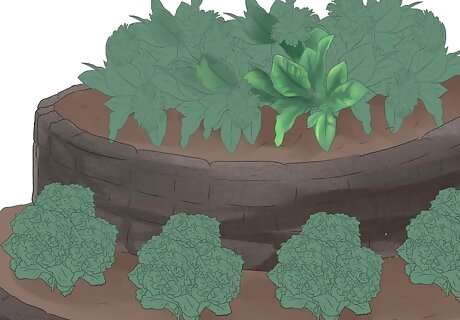
Arrange plants within your oasis. Some sides of the oasis, especially if it is near a structure, may get a lot more sunlight than others. Since some plants can take more sun and heat than others, plant the more sun-friendly, drought-tolerant plants where most of the afternoon sun will be located. Depending on water levels in the area, you may want to plan out additional water retention steps: Consider growing plants within containers to maximize water retention, especially if there is not much water runoff in your garden. Build a retaining wall if the existing structures are not large enough to retain water.
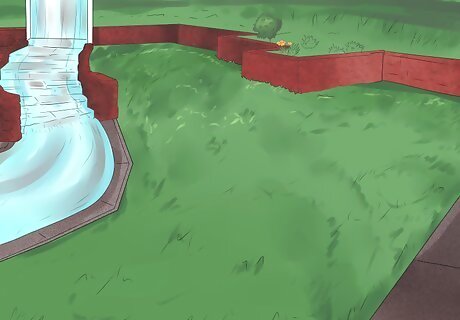
Plant lawns wisely. If you want an area of turf for kids, animals, or sports players, plan it out carefully so you only plant in areas where it will be used. Lawns require significant amounts of water, so try to place it near oases or other water sources. It can also play a valuable role in preventing erosion on hillsides. Fescues, blue grama grass, and buffalo grass use less water than most other turfs.
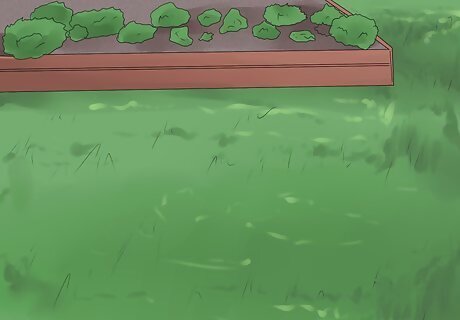
Fill out the transition zones. Surround the oasis zones or lawn areas with plants that fall in the middle of the spectrum in terms of water, sunlight needs, and visibility. One way to do this is to create a "cascade" effect from the oasis plants (tall and bright) to the transition zone (a little shorter, catching attention by texture rather than color, such as shrubs, bushes, or ornamental grass clumps) to the arid zone (low-lying, subtle and very drought-resistant). If there is a retaining wall, however, a transition zone may not be necessary. Ultimately, see what looks best to you.
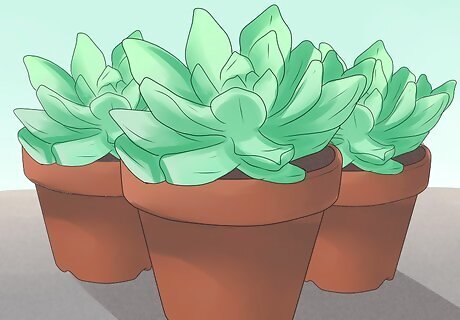
Plant arid zones. These areas are exposed to many hours of sunlight, have dry soil, or are located in out-of-the-way areas where few people see them. The lowest maintenance plants will go here. These are often native plants and/or drought-resistant plants that require little watering, if any. There are several approaches here, and you may decide to use both in your yard: You may plant larger arid zone plants include cacti, succulents, and drought-resistant shrubs. This is most common in desert areas, where water is so scarce that the oases may not add enough color or variety by themselves. You may plant low lawn substitutes instead to cover a large area with a low-water "carpet" of plants. This can include native prairie, a clover lawn, or clumps of ornamental grass surrounded by mulch. For expansive arid areas, you might make an exception and plant a taller or brighter focal point, such as a raised flowerbed or tree. A decorative structure such as a statue or wheelbarrow filled with a clump of flowers can enhance the aesthetics while requiring less watering than other options.
Maintaining Your Garden
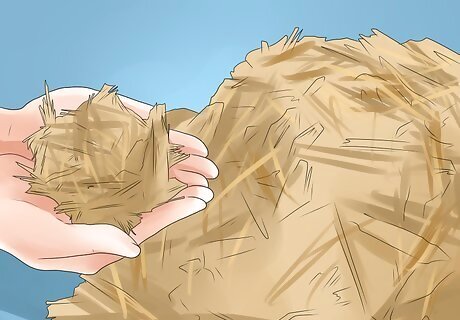
Mulch. Choose an appropriate mulch to help reduce erosion and suppress weeds. Organic, wood-based mulch will also retain moisture. As it decomposes, it will improve the soil over time, but it needs to be replaced regularly. A stone or gravel mulch, on the other hand, does not need to be replaced, but can retain a good deal of heat in sunny areas, which can damage delicate plants. Whichever mulch you choose, apply it to a thickness of 2-4 inches (5–10 centimeters) around shrubs, trees, and flower beds. Do not put it in direct contact with plant stems. Avoid plastic mulch and other mulch that does not allow water and air to pass through.
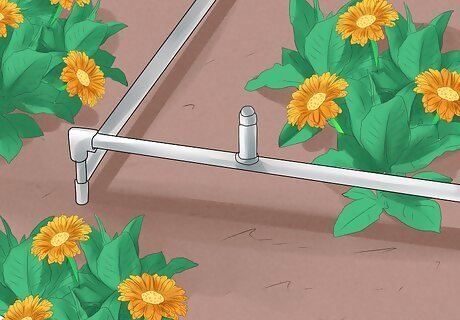
Consider irrigation. Develop a water thrifty drip irrigation system if necessary to minimize evaporation and run-off. If using a sprinkler system instead, use low volume emitters, preferably with a rain sensor that automatically switches the sprinkler off on rainy days
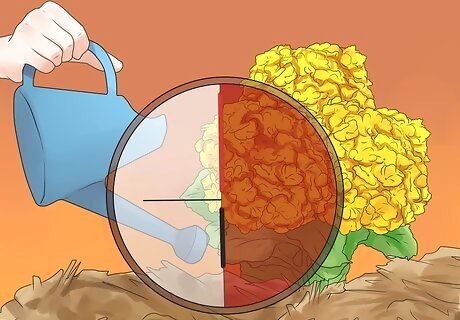
Time your watering. If you're watering by hand or using a timed watering system, water deeply and infrequently to encourage the development of deep roots that can make use of water in the soil. Always water between 6pm and 10am, to minimize loss from evaporation.
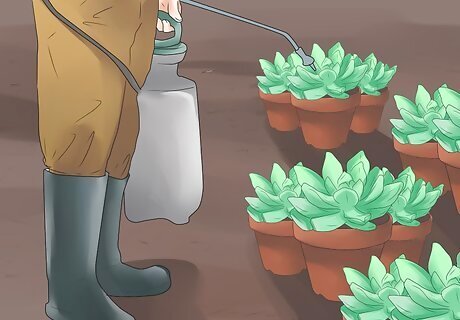
Fertilize sparingly. Slow-release fertilizers are less effort for the gardener, and reduce the chance of over-fertilization. If you apply fertilizer in too large a quantity, you might be encouraging tall, straggly growth that root development cannot keep up with, making the plant more resource-intensive. Use organic composts and topdressing mulches as well.
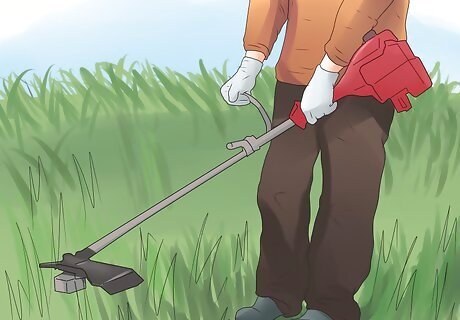
Handle your garden's upkeep. Regular maintenance is a core value of xeriscaping plans. Check on your garden often, and you'll be able to address problems before they get out of hand. Here are some basic tips to keep your garden attractive and maximize its water use: Remove weeds by hand before they get established. Reduce water and fertilizer if your plants have weak, straggly growth. When mowing your lawn, remove no more than 1/3 of the grass height, and use a sharp mower blade.


















Comments
0 comment